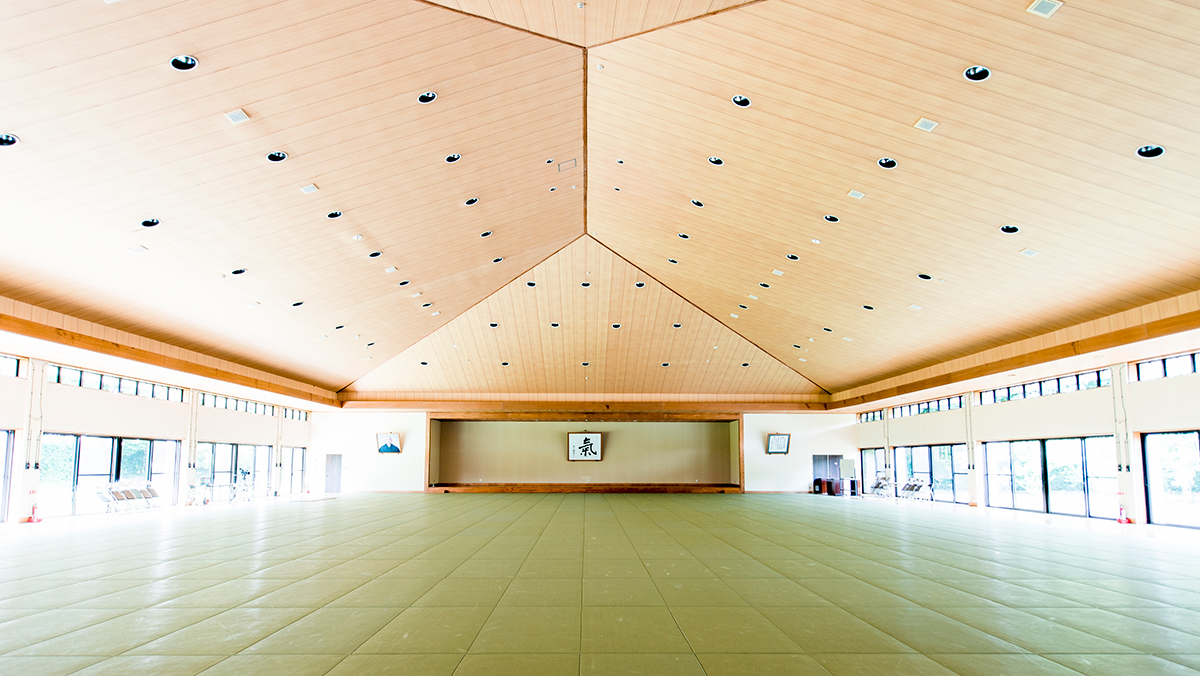A state of emergency has been declared in Tokyo and some prefectures. According to news reports, the areas under emergency status are expected to expand even further.
In Shinshin Toitsu Aikido Kai, practice will be conducted at the discretion of the dojo head in accordance with the “Guidelines for the Prevention of the Spread of New Coronavirus Infection”.
There is a possibility that we may have to suspend our practice or merely change the time of day, based upon the request to refrain from going outside. We ask for your understanding in this matter.
During last year’s emergency declaration, we suspended activities at dojos all over Japan.
Feeling a great sense of crisis, I got information about Zoom from a person in the know, and immediately started online classes with approximately 50 people at the Tokyo HQ dojo.
These Zoom classes developed one after another, and after only two months, I was able to practice with around 500 people from several dojos, and all connected through Zoom.
Initially, the online classes worked as a substitute for not being able to open class in a dojo or classroom, but as dojo or classroom training resumed, it became less responsive.
If online class is seen as a substitute for class in the dojo, it is only natural that this should be the case. So, we decided to change the approach to our online classes from “we can also do it online” to “we can do it because of online”.
For example, a participant from far away has to spend a lot of time and money to attend class in a big city. With online classes there are no such restrictions. In fact, many of the participants who attend the online class live in far away places.
For example, if you are a caregiver for the elderly and time is critical for you, you would have to set aside half a day, including the time to get there and back, in order to physically attend a class at a dojo. With online classes, you can make use of any spare time you have, and with on-demand class, you can learn when you want to.
Of course, there are some points that can only be communicated in the dojo. However, we have found that by consolidating what can be communicated online, our classes at dojo are enhanced as a result. And when we can once again attend dojo classes, we can focus on what we are able to practice on the tatami mat at dojo as well.
We continue to do “what we have always done” without question, but the new coronavirus has taught us how important it is to ponder “why we are doing this” and to start from scratch. We might not have been able to do this if it had not been such a global crisis.
On the 10th of January, we held “Kagami Biraki Event” at online.
In spite of the state of emergency declared, 500 people from all over Japan participated in the event, and in addition, 80 instructors from the USA, Russia, Europe, Australia and other countries participated as guests.
This is a great example of one of the things that “we can do it because we are online”. Some of them practiced online from their homes and others gathered at the dojo.
The purpose of our studying is “to Extend Ki”, and this event was extremely important opportunity to achieve this goal. We could extend Ki through interacting with each other from other countries for the first time in a long time.
This year we are planning an international event for 1,000 people. Online Kagami Biraki had been a good test for it.
In the near future, we want to have an online event that serves 10,000 people online. Then, after this pandemic is resolved, we want to hold a “World Camp” in person. This event has had to be postponed in Japan because of Covid19. However, we want to practice together in Tenshinkan Dojo which has 520 tatami mats as soon as possible.
There are many people who stagnate Ki because of the new corona virus. If you stagnate Ki, you cannot use your mind positively. It is precisely in these kinds of limited social conditions that it is important to “Extend Ki”.
By practicing Shinshin Toitsu Aikido and “Extending Ki”, this stagnation can be cleared up. For this reason, I have decided to set up new dojos in all the major regions of Japan. I will create an environment where you can practice Shinshin Toitsu Aikido wherever you are in Japan.
To create a dedicated dojo requires a certain amount of preparation and time, but the “places” to practice Shinshin Toitsu Aikido can and will be increased with flexibility and commitment.
To achieve this, we will require three times as many instructors and places to practice as we now have. In particular, developing instructors is most important. By exploring the possibilities of online, this goal has become realistic. We now hold online instructor training classes and many of our instructors are participating.
Our goal is to achieve this in five years.
As for overseas, we currently have dojos in 24 countries. The damage caused by this new corona virus differs greatly from country to country. In spite of this situation, we will increase new opportunities for overseas just as we did in Japan, while keeping an eye on the infection status carefully. There is no doubt that online will play an even more important role overseas.
We would like to thank you all for your support in the future.
Translate: Moe Mimori
Edited by: C. Curtis
Hawaii Ki Federation
https://www.hawaiikifederation.org/

